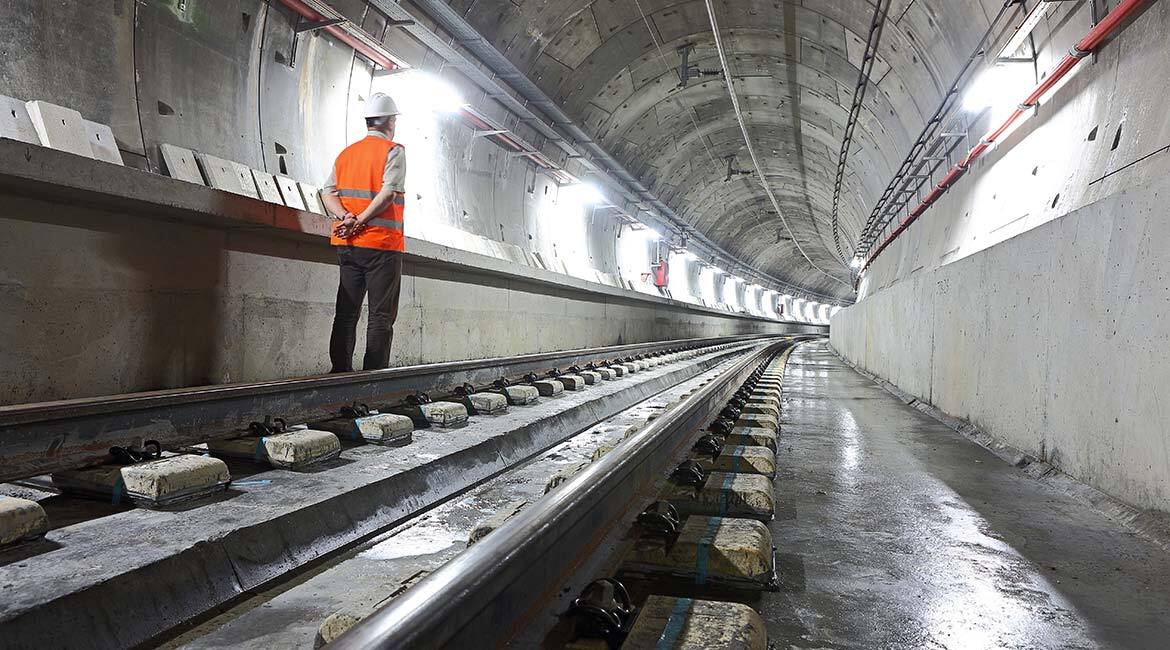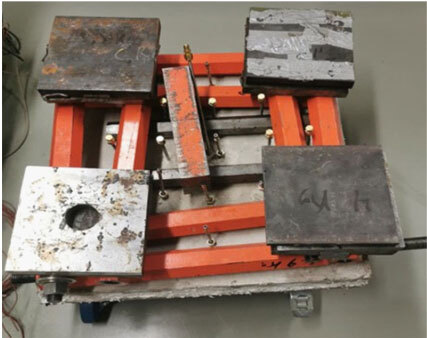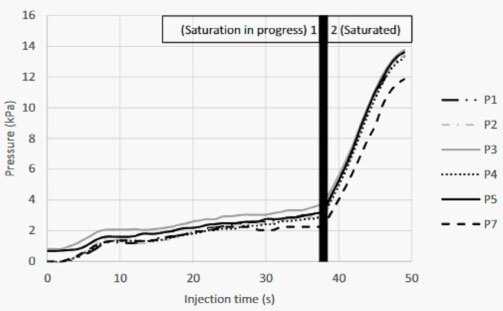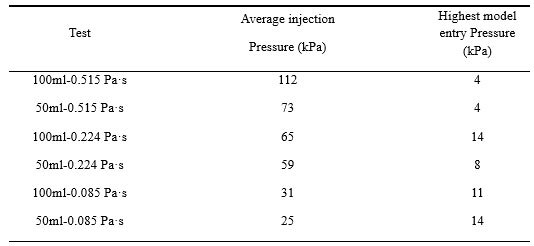Waterproofing Concrete Fractures in Tunnels Using Polymer Injections

Purchased from Gettyimages. Copyright.
To prevent water infiltration in tunnels, polymers can be injected in the fractured concrete lining. This study introduces two physical models for the study of pressure inside concrete fractures during polymer injections for waterproofing. The injection parameters studied are injection duration, injection volume, and dynamic fluid viscosity. To simulate polymer flow in the fracture, water and water-glycerol mixtures were used. This made it possible to study the influence of viscosity on flow. Pressure inside the fracture during injection was affected by dynamic viscosity, boundary conditions and fracture saturation levels. Only sealed and moistened fractures resulted in fracture saturation. Keywords: Pressure, waterproofing, polymer injection and concrete fractures
Issues and Challenges of Polymer Injection for Waterproofing
Water infiltration through concrete fractures in tunnels causes significant structural damage, such as rebar corrosion. Waterproofing injections consist in injecting a chemical grout, a polymer, into the fracture using a pump. The chosen injection equipment has an influence on the injection procedure—a constant or variable flow rate can be applied. A surface capping product can be applied on the fracture to keep the polymer inside the fracture. To ensure polymer penetrability into the fracture, dynamic viscosity is generally low. Phosphoric acid is sometimes used to clean the fracture before injection. Presently, it is very difficult to find publicly available literature on injection into fractures in concrete tunnels. There is no standard procedure to ensure the success of this method. The consequences of injection in moist fractures have not been assessed in the literature. The main injection parameters are dynamic resin viscosity, location of injection ports, injection pressure, injection duration, and injection volume. Injection parameters are often arbitrary, and it is difficult to find specifications that ensure the desired injection results, which is complete and permanent fracture sealing.
Methodology
Two physical models were built. Both models were made with concrete slabs placed one on top of the other to simulate a fracture. Plastic film was inserted between the two slabs allowing separating them after the concrete had cured. To study the effect of surface capping, the first model was not sealed and the second model was sealed. Five liquids with different dynamic viscosities were injected to observe the influence of this parameter on pressure distribution in the fracture. Water and four mixtures of water and glycerol were used. For the dry fracture, multiple injections were done successively without opening the model. The total injection volume is the sum of the injected volumes. For the moist fracture, the entire volume was injected at once. Figure 1 shows the second physical model with a weight applied to create flow resistance during propagation. Tests were also performed when the physical model was dry and moistened to study the effect of the initial saturation level on injection results.

Figure 1. Second physical model with weight
Pressure Increase During Injection
No pressure was noted during the injection of the first model. This can be explained by the lack of flow resistance during propagation. The second model led to higher pressures because it was sealed and the pressure transducers were closer to the injection point. Figure 2 shows an example of test results using the second model. The pressure increase can be separated into two parts. The first part corresponds to fracture saturation. It took approximately less than 40 seconds to complete fracture saturation and for the liquid to reach the fracture boundary and surface seal. This corresponds to an injected volume of approximately 77 ml. The second part shows a significant increase in pressure inside the model. This more rapid pressure increase can be explained by the saturated state of the fracture and the confinement provided by the sealing material. The liquid has nowhere to go because the model is sealed.

Figure 2. Pressure increase using the second model
A significant pressure drop was noted between the pump outlet and the injection point. Table 1 shows a comparison between the average pressure at the pump outlet and the highest entry pressure observed in the second model for multiple injections. Pressure loss increases with viscosity. The high-pressure loss in the tubing compared to the fracture can be explained by the aperture of the physical models. The aperture varied between 0.5 mm and 1.5 mm. The pressure loss in the tubing is consistent with the values that can be estimated with the Darcy-Weisbach equation.
Table 1) Comparison between injection pressure and entry pressure in the model

The purpose of this study was to determine the influence of injection parameters on pressure and liquid distribution during waterproofing injections into concrete fractures. Boundary conditions, initial fracture saturation and liquid viscosity were the parameters that influenced pressure. Using water-glycerol mixtures to reproduce polymer flow made it possible to completely saturate the fracture when injections were performed with a sealed and initially moistened fracture. This can be interpreted as obtaining a fracture full of polymers when surface capping was applied and the fracture was moistened prior to the injection.
Additional Information
For more information on this research, please read the following paper:
El Mekari, K., Duhaime, F., & Shafaei, A. (2023). Physical and numerical models of pressure during waterproofing injections with polymer into concrete fractures. Journal of Structural Integrity and Maintenance, 8(3), 188-197.



